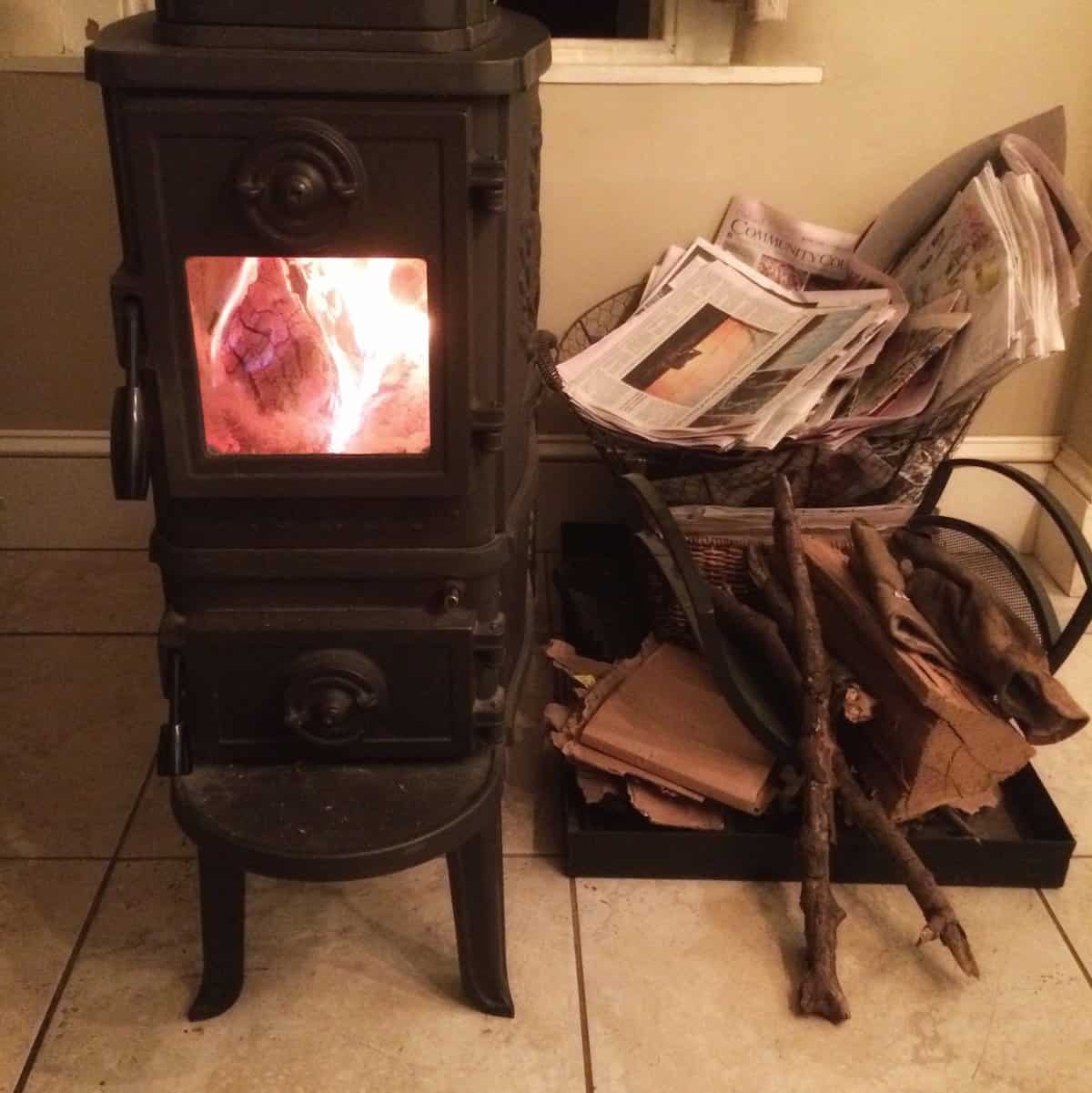
Ashes to ashes, dust to dust.
Every winter I walk a circle. It begins at the woodstove in my kitchen where I will cram one more hardwood log into the fiery maw.
At least, I choose this as the beginning because it suits this story. Fire makes a vivid, propulsive beginning, don’t you think? As is the case with every circle, I might have chosen differently. I might have chosen a peaceful beginning in the dappled shade of the forest where my log once grew. But to begin with peace is to tell a different story.
Ashes to ashes, dust to dust.
We keep our kitchen woodstove burning almost around the clock—another circle—from November to March. We light occasional fires in October, with great joy, and occasional fires in April, with great bitterness. By then, we are more than ready to trade woodfires for wildflowers.
I speak of a circle because even excellent, seasoned hardwood cannot burn away to nothingness. Like all living things it belongs to some particular cycle. First, it blazes into hot coals, like living jewels. Then, it smolders, cools, and is transformed into flaky ash. When the ash drawer in our woodstove fills up, I empty the drawer into the small ash bucket. When the bucket fills up, I carry it to the apple trees that grow just beyond the kitchen window. I pour a circle of ash around each living tree.
Wood ash is a gift to many plants in the garden, but it is most appreciated by hardwood trees, and especially by fruiting hardwood trees like apples.
Ashes to ashes, dust to dust.
Whether or not we worship in churches where ashes will be dispensed today, we understand the symbolic heft of those phrases. We are familiar with the weighty words that have been echoing since the beginning of our collective story in the Book of Genesis:
“By the sweat of your brow
you will eat your food
until you return to the ground,
since from it you were taken;
for dust you are
and to dust you will return.”
With firewood in my arms, I am tracing one particular circle. Hardwood burns to ash, wood ash feeds the soil, soil feeds the tree, tree gives fruit (and here, perhaps my body’s circle links with the tree’s circle, when I pick that fruit and eat it), tree gives firewood, firewood give ash.
This is basic geometry, but I do think it bears repeating: stand anywhere on a circle, and you are always turning; always, as it says in Genesis, re-turning.
But what happens if the circle is broken? What happens if I tip my ash bucket into a garbage bag and tip that bag into my trashbin and watch as that trashbin is tipped into the grinding maw of a truck that will eventually spit it all out in a landfill?
I think we have a word for that kind of brokenness, and it is an old word. Another Genesis word.
I am speaking, of course, of sin.
The Wednesday ash, this whole liturgical season, reminds us of the meaningful, generative cycle of death and life: “Very truly I tell you, unless a kernel of wheat falls to the ground and dies, it remains only a single seed. But if it dies, it produces many seeds” (John 12:24).
During Lent, we remember the potential fruitfulness of death. We anticipate the hope of resurrection. After all, if the pattern holds, if the pattern-maker can be trusted, then death cannot be the end. Because we are always turning. We are always re-turning.
But this season also calls us to mind everything that would break these circles. How are we interrupting the fruitful cycles of our life? How are we disrupting the fruitful cycles of our communities, our shared institutions, and, yes, even our parks and gardens and farms?
Are we tipping life-giving ashes into plastic bags and bins?
Ashes to ashes, dust to dust. It’s beginning to sound like a prayer, isn’t it?
Ash Wednesday has come again. The season of Lent returns to us just as, here in the northern hemisphere, winter (hopefully) turns to spring.
The time has come to tend our soil, friends. It is sometimes bleak and dusty work. But be encouraged. Though we walk through flames, we will reap a harvest of peace.
Christie Purifoy earned a PhD in English Literature at the University of Chicago before trading the classroom for a farmhouse, a garden, and a blog. She is the author of Roots and Sky: A Journey Home in Four Seasons and Placemaker: Cultivating Places of Comfort, Beauty, and Peace.
earned a PhD in English Literature at the University of Chicago before trading the classroom for a farmhouse, a garden, and a blog. She is the author of Roots and Sky: A Journey Home in Four Seasons and Placemaker: Cultivating Places of Comfort, Beauty, and Peace.


